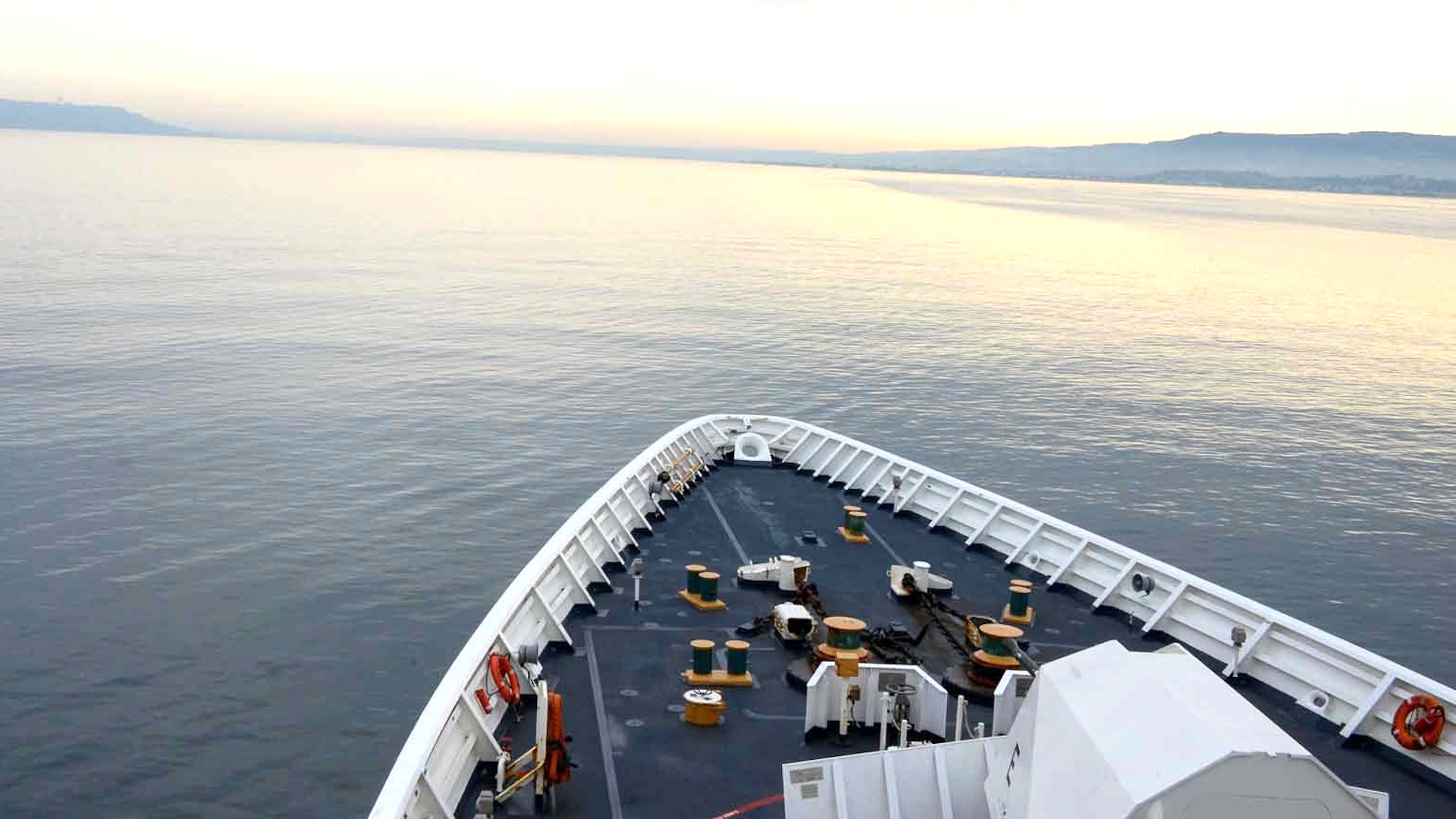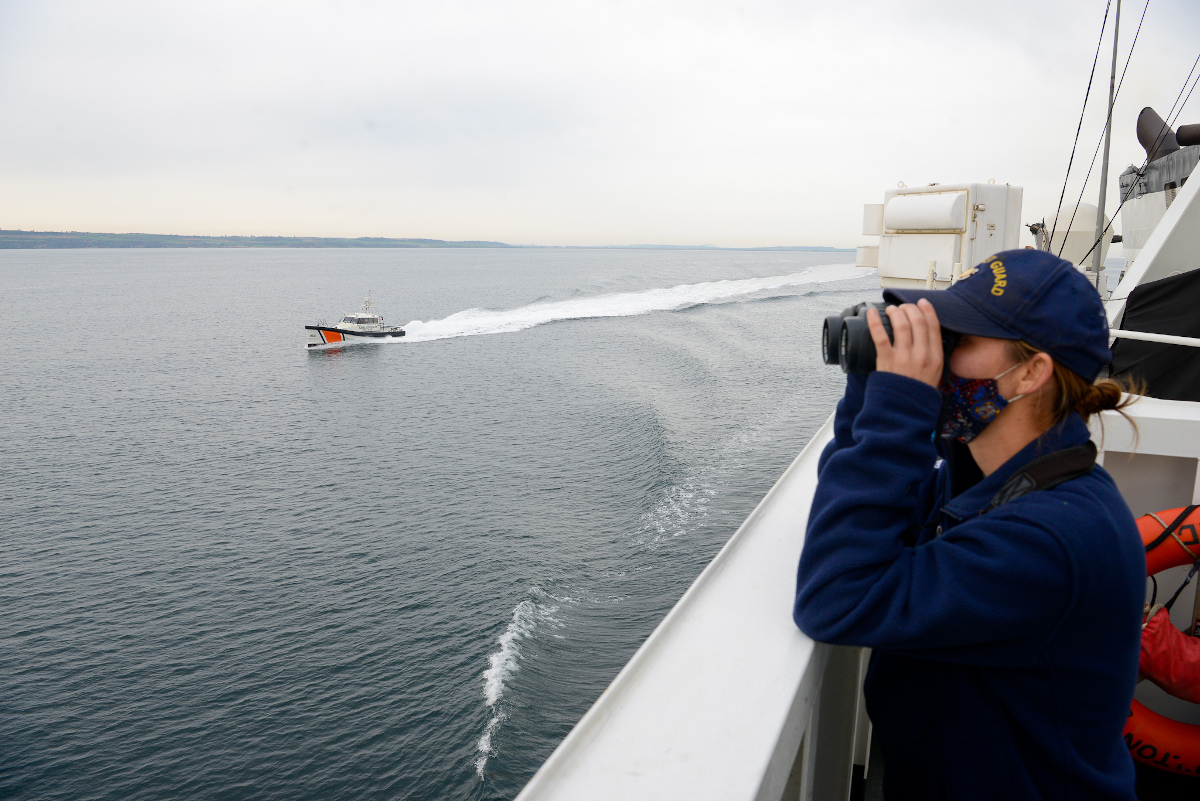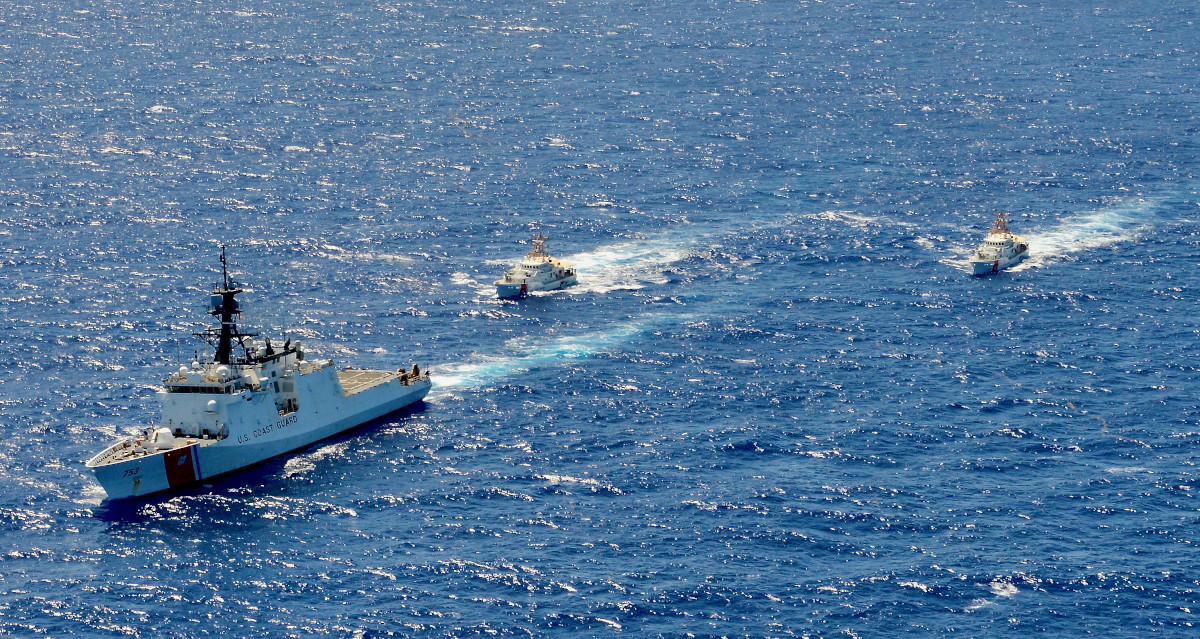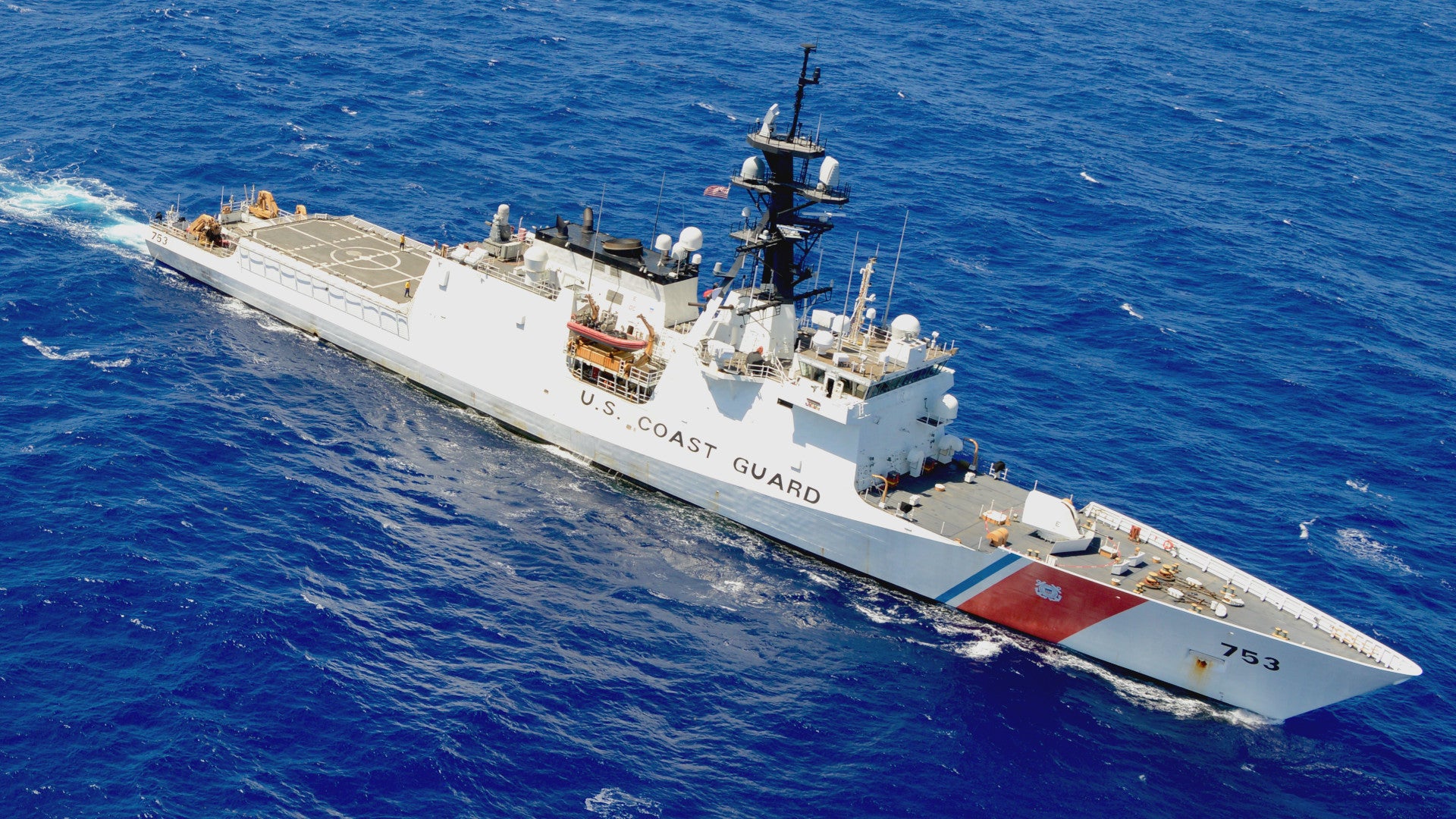A U.S. Coast Guard cutter has entered the Black Sea for the first time in 12 years, underscoring a resurgence in the significance of the service’s presence around the world in recent years. The Legend class National Security Cutter USCGC Hamilton arrived in that important body of water less than a week after Russia claimed it had started to reverse course on a worrisome military buildup along its border with Ukraine. The flood of Russian forces into the region, starting in March, had prompted fears that a new crisis was imminent.
Hamilton transited from the Mediterranean Sea into the Black Sea, by way of the Dardanelles and Bosphorus straits, on April 27. The ship left its homeport of North Charleston, South Carolina earlier this month and made its way across the Atlantic together with a pair of smaller Sentinel class fast response cutters, the USCGC Charles Moulthrope and USCGC Robert Goldman.

“This patrol comes after Hamilton conducted logistics visits to Naples, Italy, and Rota, Spain,” the public affairs office for U.S. Naval Forces Europe and Africa and U.S. Sixth Fleet said in a press release. “The U.S. Coast Guard is conducting a routine deployment in U.S. Sixth Fleet, working alongside Allies, building maritime domain awareness, and sharing best practices with partner nation navies and coast guards.”
Hamilton is the first Coast Guard cutter of any kind to visit the Black Sea since the Cold War-era Hamilton class high-endurance cutter USCGC Dallas sailed into that body of water in 2008. At that time, Dallas had also been the last Coast Guard vessel to enter the Black Sea, back in 1995.

It’s not necessarily surprising that Coast Guard ships generally don’t head into the Black Sea, which would be a very high-risk zone if a conflict with Russia were to break out. The Russian Navy’s Black Sea Fleet includes numerous full-size warships, as well as submarines, all armed with anti-ship cruise missiles, among other weapons. This is not to mention the country’s land-based anti-ship cruise missile batteries and combat aircraft capable of conducting anti-ship strikes based in the region, including in Crimea, which Russia seized from Ukraine in 2014. Those forces are bolstered by other anti-access and area-denial assets, such as surface-to-air missile batteries, including ones equipped with the long-range S-400 system.
That Hamilton is the first Coast Guard ship to enter the Black Sea in more than a decade makes good sense, too. The 4,600-ton-displacement Legend class cutters are presently the Coast Guard’s most capable ships and are armed with a 57mm main gun, as well as Phalanx Close-In Weapon System (CIWS) with a 20mm Vulcan cannon and various smaller machine guns. There has been discussion in the past about potentially arming these ships in the future with Harpoon anti-ship missiles, a capability that some Cold War-era Hamilton class cutters had for a relatively brief period between the 1980s and 1990s.
These ships also have an AN/SLQ-32(V)2 Surface Electronic Warfare Improvement Program (SEWIP) electronic warfare suite and Mk 53 launchers loaded with Nulka anti-missile decoys. Mk 137 Super Rapid Bloom Offboard Countermeasures (SBROC) launchers can also launch decoy flares or chaff to confuse enemy radars or the seekers in radar-homing missiles.

The cutters have various radars and other sensors, along with a COMBATSS-21 combat management system, too. COMBATSS-21 is a derivative of the Aegis combat management system that is also found on both subclasses of U.S. Navy’s Littoral Combat Ships (LCS), among other warships, and will be a feature on that service’s future Constellation class frigates, too.
Beyond that, the cutters have a rear flight deck and a pair of hangars, allowing them to embark helicopters. There is also a rear well area for the deployment of smaller boats.
Hamilton‘s visit to the Black Sea also comes at a time of heightened tensions in the region following weeks of Russian forces pouring into areas along the country’s borders with Russia, including in Crimea. Last week, Russian Defense Minister Sergei Shoigu announced the imminent withdrawal of at least some of those troops, who had deployed the region ostensibly as part of a snap readiness exercise. Other forces, however, will remain in position near Ukraine and the full extent of the purported drawdown remains to be seen.
On April 9, with that buildup still well underway, Turkish authorities had disclosed that two U.S. Navy destroyers were scheduled to head into the Black Sea. The 1936 Montreux Convention mandates that countries that do not have a Black Sea coastline must give advance Ankara notice about the deployment of naval vessels in and out of that body of water. That agreement also puts restrictions on the total combined tonnage of warships belonging to non-Black Sea states that deploy there and how long they can stay. The Dardanelles and Bosphorus are both fully within Turkey’s territorial waters.
However, Reuters reported on April 14, citing Turkish officials, that the Navy was no longer planning to send destroyers into the Black Sea. So, Hamilton is also the first American military vessel to travel there since the Ticonderoga class cruiser USS Monterey and the Arleigh Burke class destroyer USS Thomas Hudner left in March. In January, two other Arleigh Burke class destroyers, along with a fleet oiler, had sailed into the Black Sea, triggering Russian anti-ship drills.


Hamilton‘s arrival did not go unnoticed by the Russians, either. “The Black Sea forces and means have begun monitoring the actions of USCGC Hamilton, which entered the Black Sea on April 27,” the Russian National Defense Control Center said in a statement, according to state-run outlet TASS. The Coast Guard cutter will no doubt keeping an eye out for any notable developments in the region while it is there, as well.
Beyond all this, the rare deployment of a Coast Guard cutter to the Black Sea underscores a renewed appreciation for the service’s ability to conduct operations far away from America’s borders in recent years. This has included employing a Coast Guard cutter on a so-called Freedom of Navigation Patrol (FONOP), which the U.S. government uses to challenge controversial territorial claims, through the Taiwan Strait in 2019.
Coast Guard ships have also been forward-deployed in the Persian Gulf for decades, but there has been more visible integration between them and their Navy counterparts in that region in recent years. Cutters have been notably involved in two altercations in the Persian Gulf with boats belonging to Iran’s Islamic Revolution Guard Corps (IRGC) just this month, including one yesterday where the Navy’s Cyclone class patrol craft USS Firebolt
fired warning shots to ward off the Iranians.
The USCGC Charles Moulthrope and USCGC Robert Goldman, the Sentinel class cutters that crossed the Atlantic with the Hamilton, are actually headed for a deployment to Bahrain in the Persian Gulf.

The Coast Guard, which has been conducting operations around the world for centuries now, is a branch of the U.S. military and can support military operations if called upon to do so. However, it has a unique legal status that also allows it to conduct law enforcement activities and it is situated within the Department of Homeland Security, rather than the Department of Defense. The value of greater integrating of the Coast Guard’s distinct authorities in Navy operations, as well as those of the Marine Corps, both in response to acute contingencies and on a day-to-day basis, was an important component of a new, overarching tri-service naval strategy unveiled last year.
All told, USCGC Hamilton‘s arrival in the Black Sea is significant both because of the current geopolitical situation in the region and as an example of the importance of the Coast Guard in U.S. national security missions around the world.
Contact the author: joe@thedrive.com
